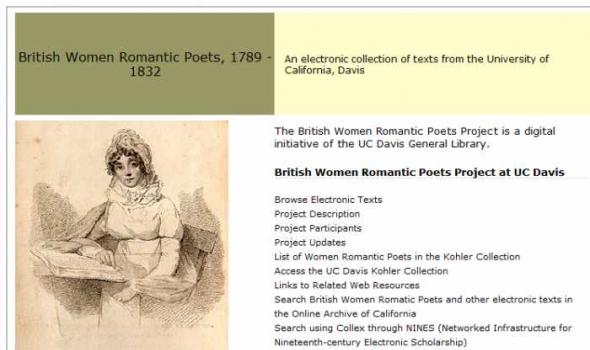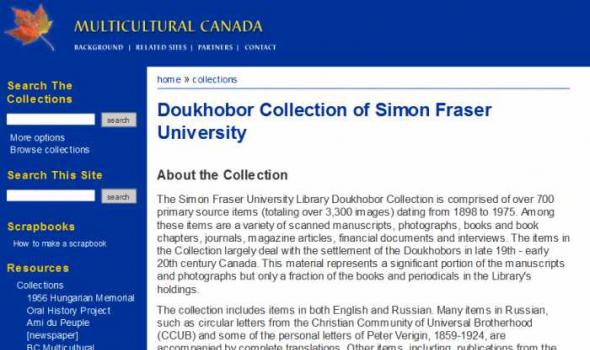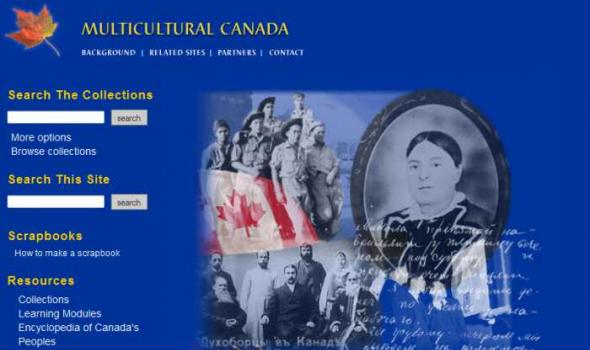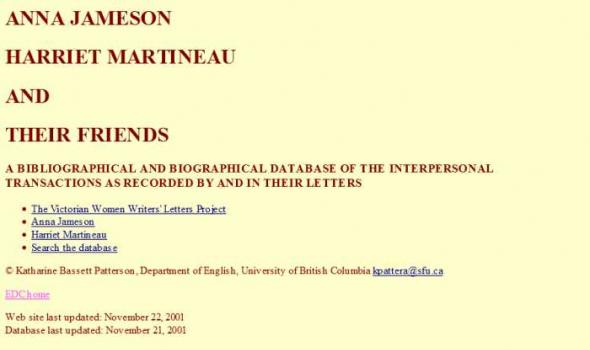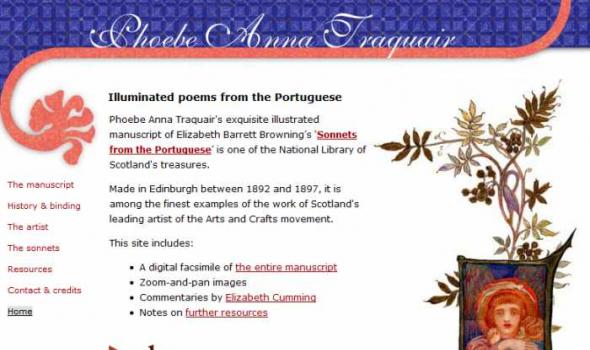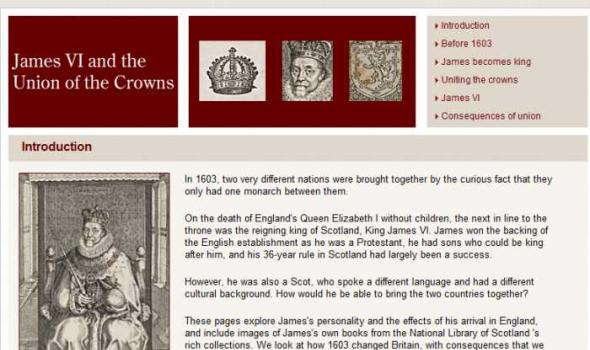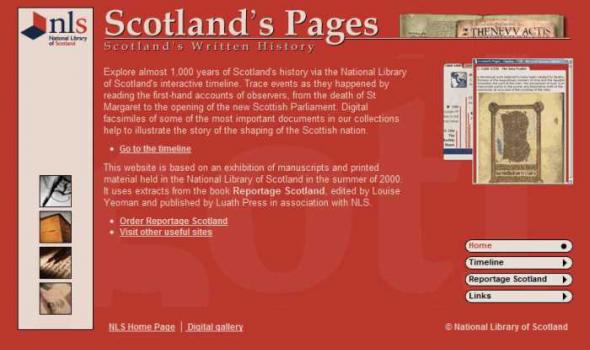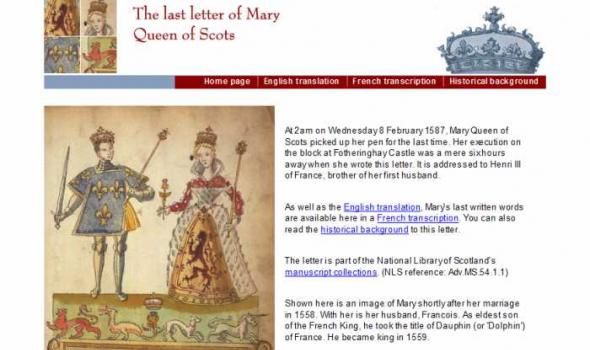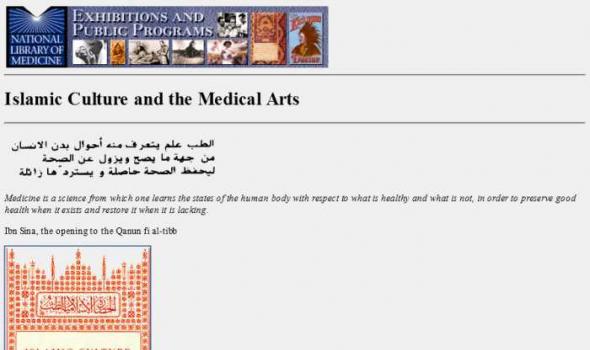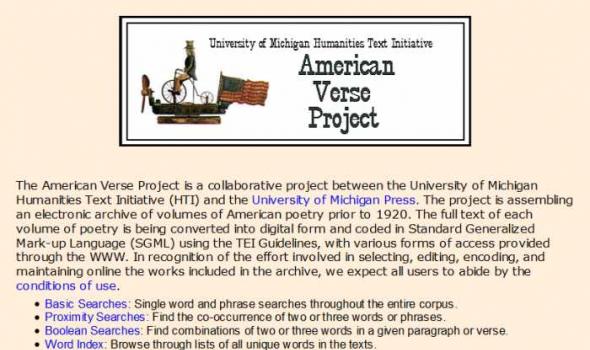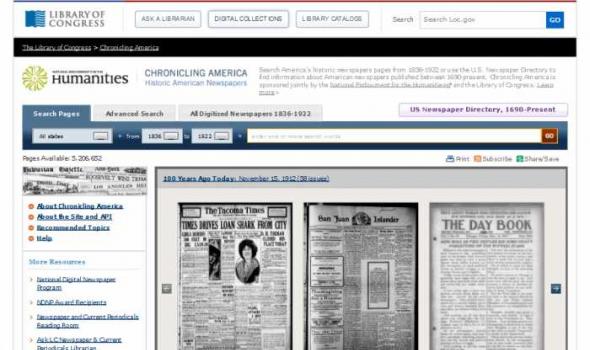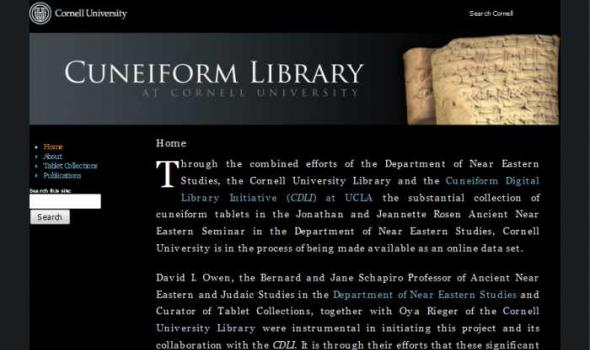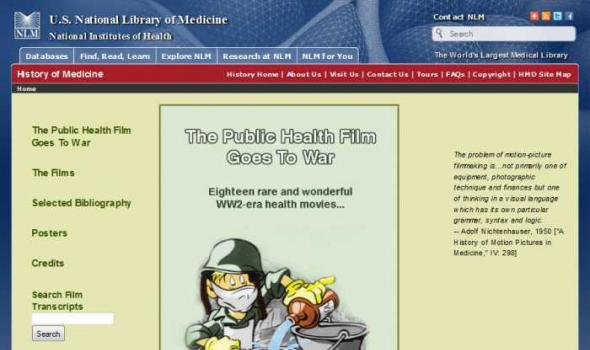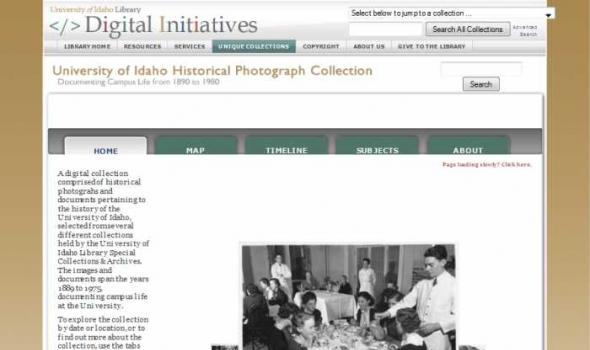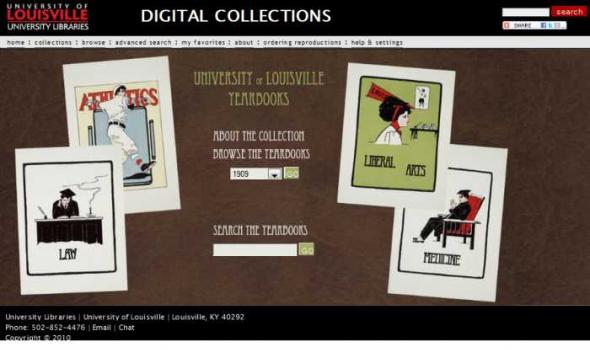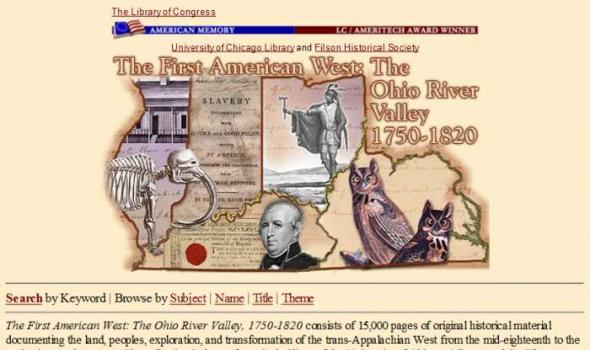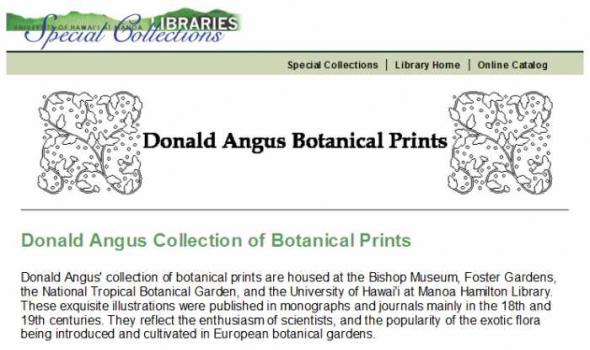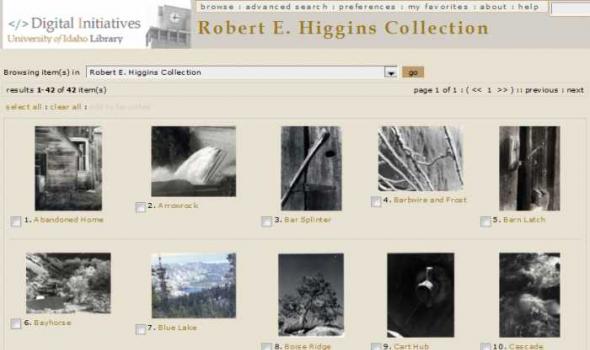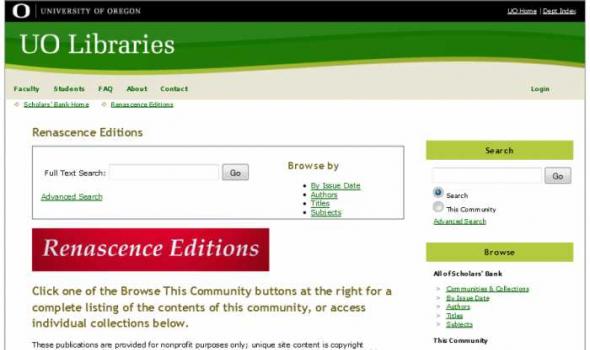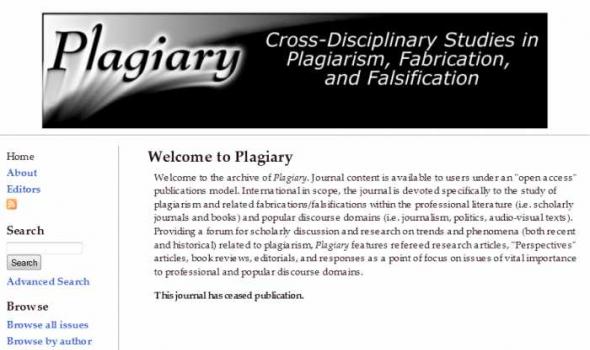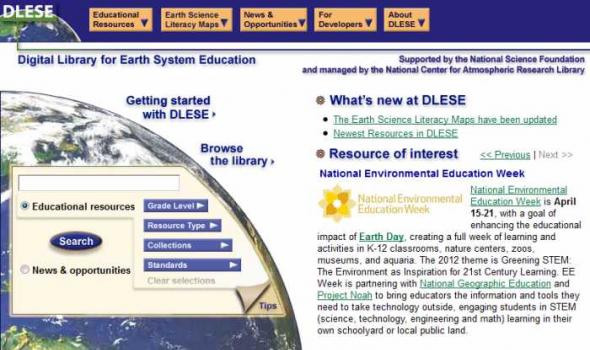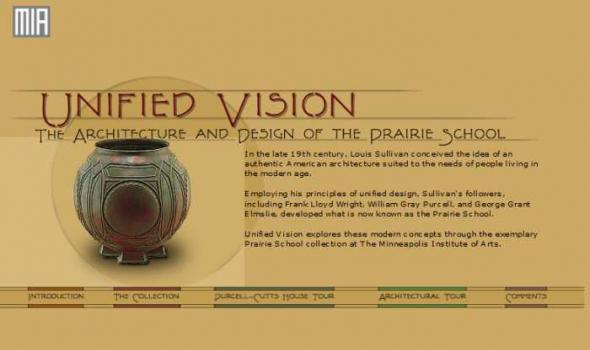Philosophy of the Journal In a climate of high subscription charges often levied by commercial publishers and learned societies alike, ARKIVOC was launched in 2000 as a journal with a very different philosophy: it was designed for universal on-demand distribution at no cost to authors (no page charges or other fees), or readers (no access or downloading charges). Many of the standard publishing procedures are used in ARKIVOC, but a major difference is that the "Control Board" which runs the journal is unpaid. ARKIVOC also has a very large Editorial Board of Referees, currently with close to 1,000 members. ARKIVOC is unique from most such boards in that about half our members come from outside Western Europe, North America and Japan.
Goals The British Women Romantic Poet's Project is producing an online scholarly archive consisting of E-text editions of poetry by British and Irish women written (not necessarily published) between 1789 (the onset of the French Revolution) and 1832 (the passage of the Reform Act), a period traditionally known in English literary history as the Romantic period. Selection Criteria Texts are being selected in consultation with our Editorial Advisory Board , consisting of scholars in the United States and Canada. Our aim is to make complete texts available that are not readily accessible from other sources, many of which are not well known, or who are only beginning to be of interest to the scholarly community.
Purchasing Print Issues Past issues can be purchased for $12 apiece from the Museum Store at the University of Michigan Museum of Art by contacting Store Manager Suzanne Witthoff at witthoff@umich.edu or 734.763.9051. About Bulletin The Bulletin of the University of Michigan Museums of Art and Archaeology was a joint publication of the University of Michigan Museum of Art , the Kelsey Museum of Archaeology , and the Department of the History of Art . This journal features scholarly articles related to subjects of interest to both museums, particularly their collections, exhibitions, and fieldwork programs.
Doukhobor Collection of Simon Fraser University About the Collection The Simon Fraser University Library Doukhobor Collection is comprised of over 700 primary source items (totaling over 3,300 images) dating from 1898 to 1975. Among these items are a variety of scanned manuscripts, photographs, books and book chapters, journals, magazine articles, financial documents and interviews. The items in the Collection largely deal with the settlement of the Doukhobors in late 19th - early 20th century Canada. This material represents a significant portion of the manuscripts and photographs but only a fraction of the books and periodicals in the Library's holdings. The collection includes items in both English and Russian.
HARRISON BROWN The Sian Incident and Beyond "Harrison Brown: The Sian Incident and Beyond" is a chronicle of author and journalist Harrison Brown's voyage to China between 1936 and 1937, and the events that unfolded during that time in what has become known as 'The Sian Incident'. The events are presented largely through the eyes of Harrison Brown himself - 'H.B.' as his friends called him - through the journals that he kept during his trip, the photographs he took, and the articles and manuscript that he wrote during and after his journey. You may browse through a collection of 137 of H.B's photos, his 22-chapter manuscript "On the Trail of a Freelance", his original hand-written journal pages, and much more.
Background Multicultural Canada: Our Diverse Heritage The Multicultural Canada digitization project grew from our conviction that the cultural groups that make up our country have little-known stories that need to be researched and told. Through newspapers, interviews, photographs, print and material culture people tell us who they are. Yet research into Canada’s multi-ethnic communities has been hampered by the relative lack of availability of non-English language materials and other artefacts originating from minority groups. Archives and libraries have long worked with individuals and cultural communities in Canada to collect and preserve the historical record of their experience; but these documents are seldom available beyond the walls of the institution.
The Simon Fraser University Library Editorial Cartoons Collection contains over 9300 original drawings published in Canadian newspapers between 1952 and the present.
You can use the quick search form at the top of the page, or click on the advanced search if you want to limit your searches by date and or by cartoonist. The quick search finds words in the following fields: publication information, cartoonist's name, cartoon text, subjects, and display notes.
Images in the database are made available under specific terms of use.
Most records in the database indicate the "SFU MsC Code" for the cartoon; this is the call number to request the drawing in the Library's Special Collections.
This was the background leading to the founding in 1965 of the Vancouver based Alcuin Society. The chief aims of the Society are “to further the interests of book collectors and to promote a wider appreciation of fine books…”. To that end the Society provides a wide range of book oriented activities, including since 1981 an annual Awards for Excellence in Book Design in Canada. The Society continues to flourish. The Society’s From Hand to Hand: A Gathering of the Book Arts in British Columbia… (1986) is a very useful introductory although dated directory of British Columbia fine printing and book arts. The 1970s were important to the British Columbia fine private press/typography scene.
The aim of the VICTORIAN WOMEN WRITERS' LETTERS PROJECT is to make available through electronic publication the correspondences of early to mid-Victorian British women writers in a form that attempts to capture the multiplexity of epistolary communication.
Blog September 9, 2009 About CHODARR What is CHODARR? CHODARR stands for Community Health Online Digital Archive and Research Resource which is a publicly accessible virtual library of community-based and government publications. It is a permanent, catalogued and full-text online archive of grey literature and research materials related to health and social welfare policy. The CHODARR archive includes documents that are not normally published by commercial publishers.
Phoebe Anna Traquair's exquisite illustrated manuscript of Elizabeth Barrett Browning’s ‘Sonnets from the Portuguese’ is one of the National Library of Scotland's treasures.
Made in Edinburgh between 1892 and 1897, it is among the finest examples of the work of Scotland's leading artist of the Arts and Crafts movement.
Edinburgh-born John Thomson (1837-1921) was one of the great names of early photography. His photographic legacy is one of astonishing quality and depth.
Thomson's images of China and South-East Asia brought the land, culture, and people of the Far East alive for the 'armchair travellers' of Victorian Britain.
He was one of the pioneers of photojournalism, using his camera to record life on London's streets in the 1870s. As a society photographer he also captured the rich and famous in the years before the First World War.
These pages present a brief introduction to Thomson's work, with examples drawn from the National Library of Scotland's collections.
The Scottish Beekeepers' Association has deposited the Moir Rare Book Collection of 250 volumes relating to all aspects of beekeeping. It is one of the very finest collections of rare beekeeping books in the world, including items published as far back as 1525.
The foundation of the collection was due to the efforts of John William Moir (1851-1940). Inspired by the example of Scots missionary David Livingstone, Moir and his brother emigrated from Scotland in 1877 to southeast Africa, where they were initially involved in the creation of alternative transport routes to help obviate the need for slave transport. It was later, after settling in the Shire Highlands of present-day Malawi, that John Moir began beekeeping, due to the fact that his crops required pollination.
The Kirk Papers is a collection of photographs and papers belonging to East Africa pioneer Sir John Kirk. It was acquired for the National Library of Scotland in 1998/1999 with the help of a grant of £55,000 from the Heritage Lottery Fund.
Though not as well-known as his friend and fellow-explorer David Livingstone, Kirk was a trail-blazer of empire in East Africa and a man of eminence in his day. Born in Barry, Angus, in 1832, Kirk qualified in medicine at Edinburgh University and then volunteered for medical service in the Crimea. An accomplished botanist, zoologist and diplomat, he was also a talented photographer. This is evident from the collection of over 250 photographs, many of them stunning.
In 1603, two very different nations were brought together by the curious fact that they only had one monarch between them.
On the death of England's Queen Elizabeth I without children, the next in line to the throne was the reigning king of Scotland, King James VI. James won the backing of the English establishment as he was a Protestant, he had sons who could be king after him, and his 36-year rule in Scotland had largely been a success.
However, he was also a Scot, who spoke a different language and had a different cultural background. How would he be able to bring the two countries together?
The National Library of Scotland has the pre-eminent collection of decorative bookbindings produced in Scotland during the last five centuries. Some were transferred to the new National Library in 1925 as part of the collections of the Advocates Library, but many have been purchased since in an attempt to document the development of binding styles in Scotland. Below are displayed a representative sample of bindings from the 18th century, together with a number of decorative endpapers from these books.
Propaganda – A Weapon of War is a small snapshot of Second World War propaganda that can be found in the National Library of Scotland’s collections.
Between 1939 and 1945, both Allied and Axis Governments greatly influenced wartime behaviour and attitudes through propaganda. This took various forms: the printed word and pictorial leaflets, radio broadcasts and cinema and poster campaigns.
White propaganda was mostly practical information intended for the Home Front. Black propaganda targeted enemy morale, and there was a strong Scottish involvement in the clandestine organisation that developed it – the Political Warfare Executive.
On this website you'll find examples of British Government propaganda, from 'Make do and Mend' to 'Tag und Nacht'.
Explore almost 1,000 years of Scotland's history via the National Library of Scotland's interactive timeline. Trace events as they happened by reading the first-hand accounts of observers, from the death of St Margaret to the opening of the new Scottish Parliament. Digital facsimiles of some of the most important documents in our collections help to illustrate the story of the shaping of the Scottish nation.
This website is based on an exhibition of manuscripts and printed material held in the National Library of Scotland in the summer of 2000. It uses extracts from the book Reportage Scotland, edited by Louise Yeoman and published by Luath Press in association with NLS.
At 2am on Wednesday 8 February 1587, Mary Queen of Scots picked up her pen for the last time. Her execution on the block at Fotheringhay Castle was a mere six hours away when she wrote this letter. It is addressed to Henri III of France, brother of her first husband.
As well as the English translation, Mary's last written words are available here in a French transcription. You can also read the historical background to this letter.
The letter is part of the National Library of Scotland's manuscript collections. (NLS reference: Adv.MS.54.1.1)
Shown here is an image of Mary shortly after her marriage in 1558. With her is her husband, Francois. As eldest son of the French King, he took the title of Dauphin (or 'Dolphin') of France. He became king in 1559.
Robert Louis Stevenson was born in Edinburgh’s New Town in 1850. He died 44 years later on a small Samoan island in the Pacific.
During his short life he travelled the world, defied convention, and made himself one of the most famous writers of the 19th century.
Here we tell Stevenson's story, illustrated with material held in the National Library of Scotland's collections.
You can also see the entire first English edition of Kidnapped – one of his most famous tales – published in 1886.
This site features a selection of leading Scottish writers, photographed in a 30-year period by Edinburgh publisher and photographer Gordon Wright. It is based on an exhibition held at the National Library of Scotland in 2001.
Gordon Wright's photographs featured in 'The Write Stuff' are in copyright. For permission to use them, and to order print or digital copies, please email Gordon Wright.
Texts by Jennie Renton, editor of 'The Scottish Book Collector'.

